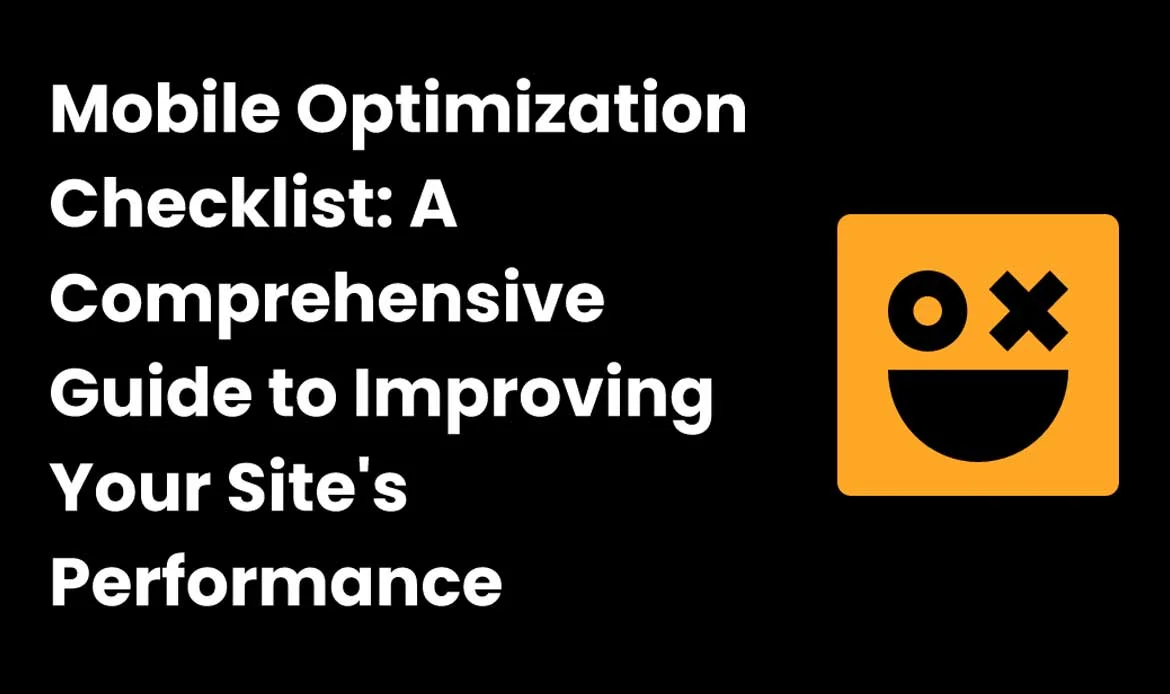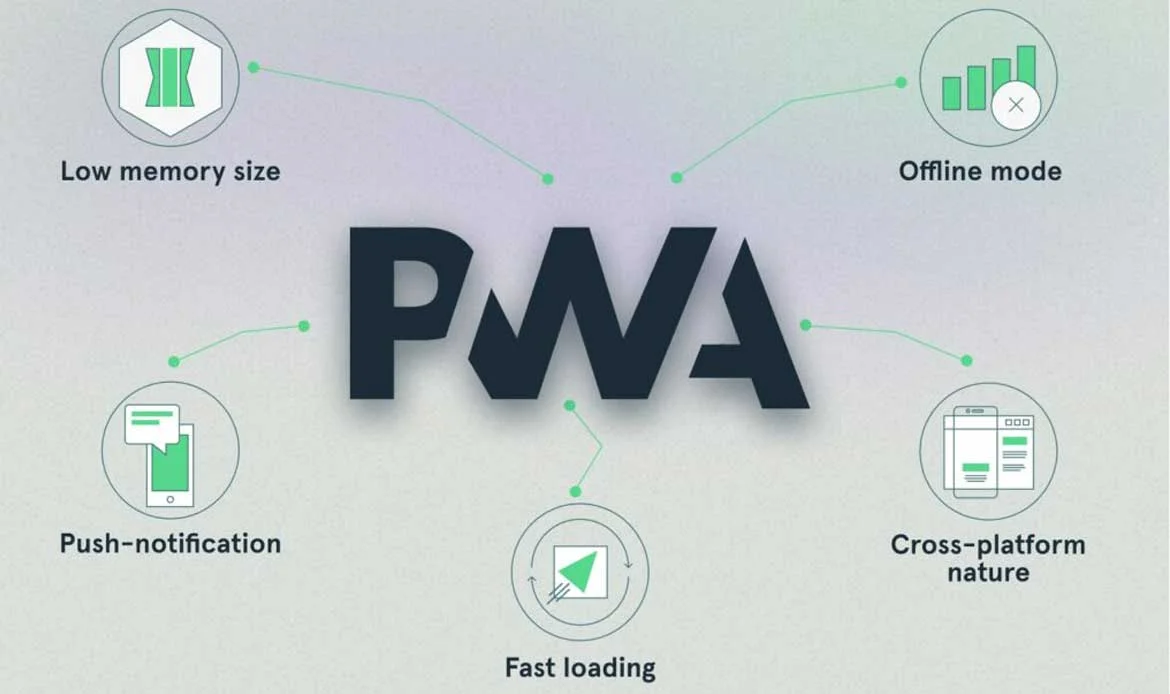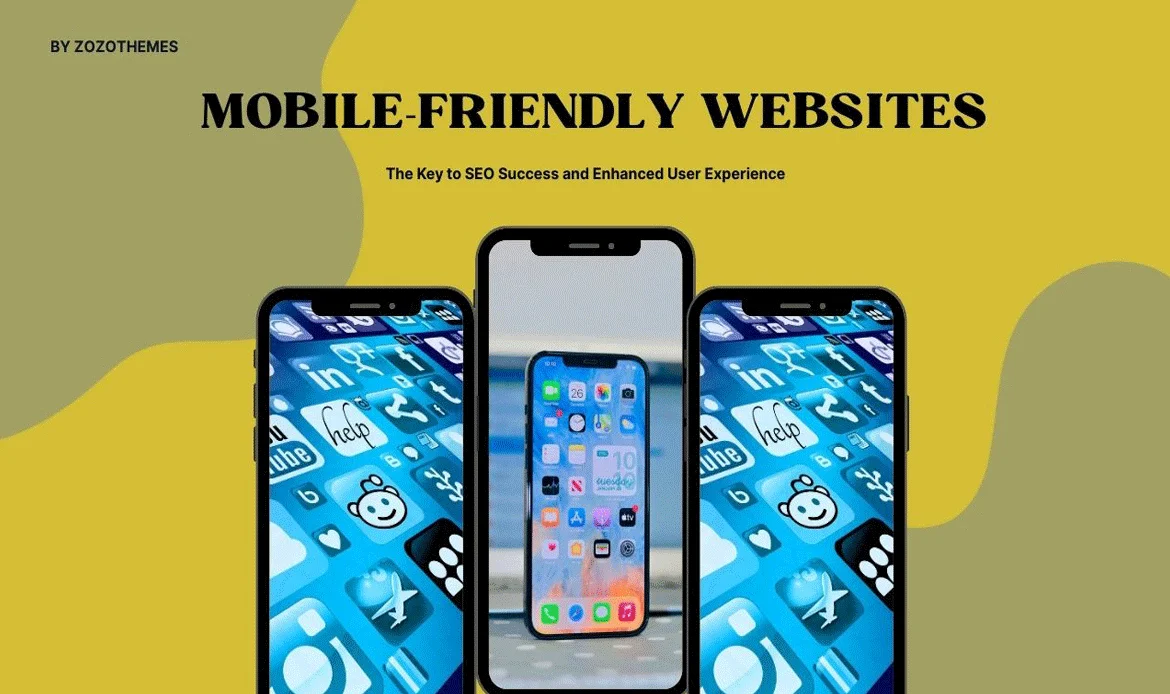1. Why Mobile-Friendliness is Essential for SEO
 Mobile-Friendly Websites are at the core of modern SEO strategies because search engines like Google use mobile-first indexing, evaluating the mobile version of a site before the desktop one. If your site doesn’t display correctly on smartphones, you risk losing rankings regardless of how optimized your desktop site may be. Mobile optimization directly influences bounce rates, dwell time, and user satisfaction, which search engines interpret as ranking signals. For businesses, prioritizing mobile responsiveness ensures visibility, higher organic traffic, and stronger competitive positioning.
Mobile-Friendly Websites are at the core of modern SEO strategies because search engines like Google use mobile-first indexing, evaluating the mobile version of a site before the desktop one. If your site doesn’t display correctly on smartphones, you risk losing rankings regardless of how optimized your desktop site may be. Mobile optimization directly influences bounce rates, dwell time, and user satisfaction, which search engines interpret as ranking signals. For businesses, prioritizing mobile responsiveness ensures visibility, higher organic traffic, and stronger competitive positioning.
Google’s Mobile-First Indexing:
Since Google predominantly uses the mobile version of a website for indexing and ranking, a mobile-friendly websites design is critical for visibility in search results.
- Improved Search Rankings: Websites optimized for mobile perform better in search engine rankings, making them more discoverable.
- Faster Loading Speeds: Mobile-optimized sites often load faster, a key factor in both user retention and Google’s ranking algorithms.
2. Common Mobile Optimization Mistakes to Avoid
 Many businesses unknowingly sabotage their SEO performance with poor mobile design choices. Common mistakes include overly complex navigation menus, large images that slow down loading speed, unplayable video content, or pop-ups that block the screen. These issues frustrate users and lead to high bounce rates, sending negative signals to search engines. Avoiding these pitfalls is crucial to maintaining a professional, user-friendly site experience.
Many businesses unknowingly sabotage their SEO performance with poor mobile design choices. Common mistakes include overly complex navigation menus, large images that slow down loading speed, unplayable video content, or pop-ups that block the screen. These issues frustrate users and lead to high bounce rates, sending negative signals to search engines. Avoiding these pitfalls is crucial to maintaining a professional, user-friendly site experience.
Ignoring Mobile Testing:
- Failing to test your website across various devices and screen sizes can lead to usability issues.
- Overloading with Media: Large media files can slow down mobile load times, frustrating users and impacting SEO.
- Inconsistent Desktop and Mobile Content: Ensure consistency in content and structure across mobile and desktop versions to avoid SEO penalties.
- Neglecting Mobile Security: Implement HTTPS, secure payment gateways, and other safety measures to build user trust.
3. E-Commerce and Mobile Optimization
 In the world of online shopping, Mobile-Friendly Websites make the difference between abandoned carts and completed purchases. Mobile users expect fast page speeds, one-click checkout options, and seamless product browsing. Optimized e-commerce websites not only improve conversions but also build trust with customers who rely heavily on mobile shopping. As mobile commerce continues to dominate global sales, businesses that fail to optimize risk losing valuable revenue streams.
In the world of online shopping, Mobile-Friendly Websites make the difference between abandoned carts and completed purchases. Mobile users expect fast page speeds, one-click checkout options, and seamless product browsing. Optimized e-commerce websites not only improve conversions but also build trust with customers who rely heavily on mobile shopping. As mobile commerce continues to dominate global sales, businesses that fail to optimize risk losing valuable revenue streams.
Streamlined Checkout Process:
Simplify mobile checkout to reduce cart abandonment rates, ensuring a seamless shopping experience.
- Mobile Payment Options: Support popular mobile payment systems like Apple Pay, Google Pay, and PayPal for convenience. Product Images and Descriptions: Ensure all visuals and descriptions are optimized for mobile screens to enhance product appeal.
- Mobile-Specific Promotions: Use targeted offers or discounts to encourage purchases from mobile users.
4. Future Trends in Mobile Optimization
 Mobile optimization is constantly evolving alongside technology. The rise of voice search optimization, AI-driven personalization, and 5G-enhanced performance will redefine how businesses approach mobile experiences. Mobile-Friendly Websites will increasingly integrate AR/VR for immersive shopping, and Progressive Web Apps (PWAs) will become a standard for delivering app-like speed and offline access. Staying ahead of these trends ensures your site remains competitive in both rankings and user experience.
Mobile optimization is constantly evolving alongside technology. The rise of voice search optimization, AI-driven personalization, and 5G-enhanced performance will redefine how businesses approach mobile experiences. Mobile-Friendly Websites will increasingly integrate AR/VR for immersive shopping, and Progressive Web Apps (PWAs) will become a standard for delivering app-like speed and offline access. Staying ahead of these trends ensures your site remains competitive in both rankings and user experience.
5G and Enhanced Experiences:
As 5G networks become widespread, expect richer multimedia content and faster interactions on mobile devices.
- AI-Powered Personalization: Implement AI to deliver personalized content, improving user engagement and retention.
- Augmented Reality (AR): Leverage AR for immersive experiences, especially for e-commerce and service-based industries.
- Mobile-First Design Evolution: Anticipate more innovations in mobile UI/UX design, focusing on simplicity, accessibility, and interaction.
5. Key Features of a Mobile-Friendly Website
 A successful mobile-optimized site must balance responsive design, fast load times, and easy navigation. Content should scale seamlessly across devices, while text and buttons must be large enough for easy interaction. Optimized images, compressed videos, and touch-friendly call-to-action buttons all contribute to better usability. These features collectively make a site more appealing to both users and search engines.
A successful mobile-optimized site must balance responsive design, fast load times, and easy navigation. Content should scale seamlessly across devices, while text and buttons must be large enough for easy interaction. Optimized images, compressed videos, and touch-friendly call-to-action buttons all contribute to better usability. These features collectively make a site more appealing to both users and search engines.
Responsive Design:
Ensures your website adjusts seamlessly to various screen sizes and resolutions.
- Optimized Images and Videos: Proper scaling and compression prevent slow loading times on mobile networks.
- Touch-Friendly Elements: Buttons and menus designed for touch navigation create a more intuitive user experience.
- Readable Text Without Zooming: Content that’s easy to read without pinch-to-zoom gestures keeps visitors engaged.
6. Mobile SEO Best Practices
 Effective mobile SEO combines technical and content strategies. Compressing images, optimizing server response times, and implementing AMP (Accelerated Mobile Pages) can improve speed dramatically. On-page SEO techniques—such as keyword optimization, schema markup, and mobile-friendly metadata—ensure your content is easily discoverable. A mobile-friendly website with these best practices consistently ranks higher in search results, driving qualified traffic and engagement.
Effective mobile SEO combines technical and content strategies. Compressing images, optimizing server response times, and implementing AMP (Accelerated Mobile Pages) can improve speed dramatically. On-page SEO techniques—such as keyword optimization, schema markup, and mobile-friendly metadata—ensure your content is easily discoverable. A mobile-friendly website with these best practices consistently ranks higher in search results, driving qualified traffic and engagement.
Mobile-Specific Keyword Research:
Identify search terms that mobile users commonly use and optimize your content accordingly.
- Voice Search Optimization: Tailor your content for conversational queries, as voice search is prevalent among mobile users.
- Geo-Targeting and Local SEO: Optimize for local search by claiming your Google Profile, adding location-specific keywords, and ensuring accurate NAP (Name, Address, Phone Number) details.
- Monitor Mobile Crawl Errors: Regularly check Google Search Console for crawl errors specific to mobile versions of your site.
7. The Impact on User Experience (UX)
 The success of Mobile-Friendly Websites goes beyond search rankings—it directly influences user experience (UX). A mobile-optimized site ensures that visitors can navigate seamlessly, access content without zooming or scrolling excessively, and interact with buttons and forms effortlessly. Faster loading times, responsive layouts, and clean design elements all contribute to a smoother journey, reducing frustration and increasing engagement.
The success of Mobile-Friendly Websites goes beyond search rankings—it directly influences user experience (UX). A mobile-optimized site ensures that visitors can navigate seamlessly, access content without zooming or scrolling excessively, and interact with buttons and forms effortlessly. Faster loading times, responsive layouts, and clean design elements all contribute to a smoother journey, reducing frustration and increasing engagement.
Seamless Navigation:
Mobile-friendly websites ensure that users can easily navigate through content, improving engagement and reducing bounce rates.
- Enhanced Accessibility: Properly designed mobile sites make it easier for all users, including those with disabilities, to interact with your content.
- Better Engagement Metrics: Sites that look and function well on mobile devices tend to have higher conversion rates, longer session durations, and increased trust.
- Adopt a fully responsive design framework.
- Regularly test site speed with PageSpeed Insights.
- Ensure all content is legible without zooming.
- Avoid intrusive pop-ups or interstitials.
- Secure your site with HTTPS.
- Optimize for local mobile searches.
- Streamlined Mobile Interactions Lead to Loyalty
- Pinterest: Mobile Load Speed Enhancements
- Domino’s Pizza: Mobile-Friendly Ordering System
- The Financial Industry: Mobile Banking Success
- Prioritize Speed Optimization: Minimize heavy scripts, use lazy loading, and leverage browser caching for faster performance.
- Implement AMP (Accelerated Mobile Pages): AMP can significantly enhance page loading speeds, especially for content-heavy websites.
- Simplify Navigation: Use collapsible menus and clear CTAs to make navigation straightforward on smaller screens.
- Ensure Cross-Browser Compatibility: Your website should perform well across all major browsers and mobile devices.
- Stronger Brand Credibility: A mobile-friendly site reflects professionalism and commitment to user satisfaction.
- Competitive Advantage: Stay ahead of competitors who may not yet prioritize mobile optimization.
- App-Like User Experience: With features like push notifications and home screen shortcuts, PWAs provide an engaging, app-like experience.
- SEO-Friendly: Unlike traditional apps, PWAs are indexable by search engines, making them a powerful tool for mobile optimization.
8. Your Mobile Optimization Checklist

To succeed, businesses need a step-by-step checklist:
9. Real-Life Success Metrics
 Case studies show how Mobile-Friendly Websites significantly impact business growth. Retailers who optimized for mobile have reported a 25–40% increase in conversions, while service-based websites see longer session durations and reduced bounce rates. These real-life metrics prove that investing in mobile optimization delivers measurable ROI.
Case studies show how Mobile-Friendly Websites significantly impact business growth. Retailers who optimized for mobile have reported a 25–40% increase in conversions, while service-based websites see longer session durations and reduced bounce rates. These real-life metrics prove that investing in mobile optimization delivers measurable ROI.
Starbucks:
10. Steps to Optimize Your Website for Mobile
 The path to optimization begins with a full mobile audit to identify pain points. Developers can then implement responsive frameworks, optimize code for faster rendering, and streamline navigation. Testing across multiple devices and browsers ensures consistency. Over time, ongoing updates maintain performance and adapt to emerging mobile technologies.
The path to optimization begins with a full mobile audit to identify pain points. Developers can then implement responsive frameworks, optimize code for faster rendering, and streamline navigation. Testing across multiple devices and browsers ensures consistency. Over time, ongoing updates maintain performance and adapt to emerging mobile technologies.
Test Your Site’s Mobile-Friendliness:
Use tools like Google’s Mobile-Friendly Test to identify areas of improvement.
11. Technical Considerations for Mobile Optimization
 Behind the scenes, technical improvements play a key role. Reducing render-blocking JavaScript, using CDN services, enabling caching, and applying lazy loading techniques are critical. These practices keep pages lightweight and responsive, leading to faster experiences and better rankings.
Behind the scenes, technical improvements play a key role. Reducing render-blocking JavaScript, using CDN services, enabling caching, and applying lazy loading techniques are critical. These practices keep pages lightweight and responsive, leading to faster experiences and better rankings.
1. Responsive Frameworks and Flexible Layouts for Mobile-Friendly Websites
A responsive framework ensures that your site adapts seamlessly across all devices, from smartphones to tablets. Flexible grids, fluid images, and CSS media queries help deliver consistent user experiences. Without this, websites may look broken on smaller screens, damaging both SEO performance and brand reputation.2. Optimizing Page Speed and Performance for Mobile-Friendly Websites
Page speed is one of the strongest ranking signals for mobile SEO. Techniques like image compression, lazy loading, browser caching, and minimizing render-blocking resources (JavaScript and CSS) can significantly reduce load times. Faster mobile-friendly websites keep users engaged and prevent them from bouncing back to competitors.3. Server Performance and Hosting Quality in Mobile-Friendly Websites
A robust hosting environment is essential for mobile optimization. Websites running on slow or overloaded servers often suffer from downtime and sluggish performance. By choosing high-performance hosting, using a Content Delivery Network (CDN), and enabling HTTP/2 protocols, businesses can ensure reliable speed for global mobile audiences.4. Security and HTTPS Implementation for Mobile-Friendly Websites
Mobile users expect safe browsing experiences. Implementing HTTPS not only protects sensitive information but also serves as a Google ranking factor. Secure connections build user trust and make mobile-friendly websites more credible in the eyes of both customers and search engines.5. Scalable and Optimized Media for Mobile-Friendly Websites
Large, uncompressed images and videos are among the biggest culprits of slow-loading sites. By adopting next-gen formats like WebP, enabling adaptive streaming, and using responsive image tags, websites can balance quality with performance. Optimized media ensures smooth interaction even on slower mobile networks.12. The Business Benefits of Mobile Optimization
 For businesses, mobile-friendly websites drive clear advantages: increased brand credibility, better customer retention, and greater revenue. When users enjoy a smooth mobile experience, they are more likely to engage, purchase, and return. Additionally, mobile optimization strengthens local SEO, making businesses more discoverable to nearby customers.
For businesses, mobile-friendly websites drive clear advantages: increased brand credibility, better customer retention, and greater revenue. When users enjoy a smooth mobile experience, they are more likely to engage, purchase, and return. Additionally, mobile optimization strengthens local SEO, making businesses more discoverable to nearby customers.
Increased Traffic and Conversions:
A better user experience leads to more traffic and higher sales or engagement rates.
13. The Role of Progressive Web Apps (PWAs)
 PWAs bridge the gap between websites and mobile apps, offering fast loading, push notifications, and offline usability. They deliver app-like experiences without requiring users to download anything. Businesses that integrate PWAs alongside Mobile-Friendly Websites enjoy higher engagement and reduced bounce rates, positioning themselves at the cutting edge of digital experiences.
PWAs bridge the gap between websites and mobile apps, offering fast loading, push notifications, and offline usability. They deliver app-like experiences without requiring users to download anything. Businesses that integrate PWAs alongside Mobile-Friendly Websites enjoy higher engagement and reduced bounce rates, positioning themselves at the cutting edge of digital experiences.
Enhanced Performance:
PWAs combine the best features of websites and native apps, offering lightning-fast speeds and offline capabilities.
SEO-friendly schema markup (FAQ Page JSON-LD)
Why are Mobile-Friendly Websites important for SEO?
Google uses mobile-first indexing, which means it evaluates the mobile version of your website for rankings. Without mobile optimization, your SEO visibility can suffer, leading to fewer clicks and conversions.
How do Mobile-Friendly Websites improve user experience?
They provide faster loading speeds, responsive layouts, easy navigation, and touch-friendly interactions. This keeps users engaged and reduces bounce rates, ultimately boosting conversions.
What are the key features of a Mobile-Friendly Website?
Key features include responsive design, compressed images, optimized code, scalable media, and secure HTTPS connections. These ensure performance and trustworthiness across devices.
Can mobile optimization increase business revenue?
Yes. A well-optimized mobile site improves conversion rates, attracts more organic traffic, and builds trust with users—leading directly to higher sales and revenue growth.
What tools can I use to check if my site is mobile-friendly?
Google’s Mobile-Friendly Test Tool, PageSpeed Insights, and GTmetrix are reliable tools to measure responsiveness, speed, and optimization levels.
Conclusion
In conclusion, mobile-friendly websites are not just a trend—they are a necessity for businesses looking to thrive in a mobile-first world. From boosting your SEO rankings and increasing organic traffic to improving the user experience and engagement, optimizing your site for mobile devices can yield substantial benefits for your brand.
As Google continues to prioritize mobile-first indexing and mobile traffic accounts for a significant portion of web browsing, that fail to adapt risk falling behind. On the other hand, those who invest in mobile optimization are positioning themselves for success in both search engine rankings and user satisfaction.
By following best practices, leveraging the right tools, and staying informed about the latest trends in mobile optimization, you can ensure that your website not only meets the needs of today’s mobile users but also enhances your SEO performance and strengthens your online presence. Don’t let your website fall behind—embrace mobile optimization and reap the rewards of a seamless, user-friendly, and SEO-friendly site.


